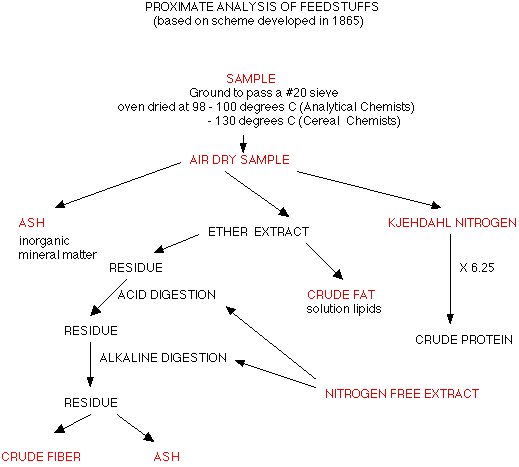|
|||||||||||
Proximate Analysis
A method for the quantitative analysis of the different macronutrients in feed is the Weende or proximate analysis, based on the Weende analysis that was developed in 1860 by Henneberg and Stohmann in Germany.
This analysis was an attempt to duplicate animal digestion. After extracting the fat, the sample is subjected to an acid digestion, simulating the acid present in the stomach, followed by an alkaline digestion, simulating the alkaline environment in the small intestine. The crude fiber remaining after digestion is the portion of the sample assumed not digestible by monogastric animals. In the proximate analysis of feedstuffs, Kjeldahl nitrogen, ether extract, crude fiber and ash are determined chemically. The determination of nitrogen allows the calculation of the protein content of the sample.
It is important to remember that proximate analysis is not a nutrient analysis, rather it is a partitioning of both nutrients and non-nutirents into categories based on common chemical properties.
Thus, the consecutive steps of the proximate analysis are the determination of::
Due to the unsatisfactory principle, most laboratories have phased out the CF term and replaced it with the Van Soest Detergent Fiber analysis. Proximate analysis and detergent fiber analysis are still the most widely used feed analysis methods, although some other methods are available: for non-ruminants, individual amino acid value is more important than the total protein, consequently, AMINO ACID ANALYZER and HPLC are used to do just that. individual mineral is more important than the ash value, ATOMIC ABSORPTION SPECTROPHOTOMETER is most widely used for this purpose. energy content of the feed use BOMB CALORIMETER. back to top of
page |
